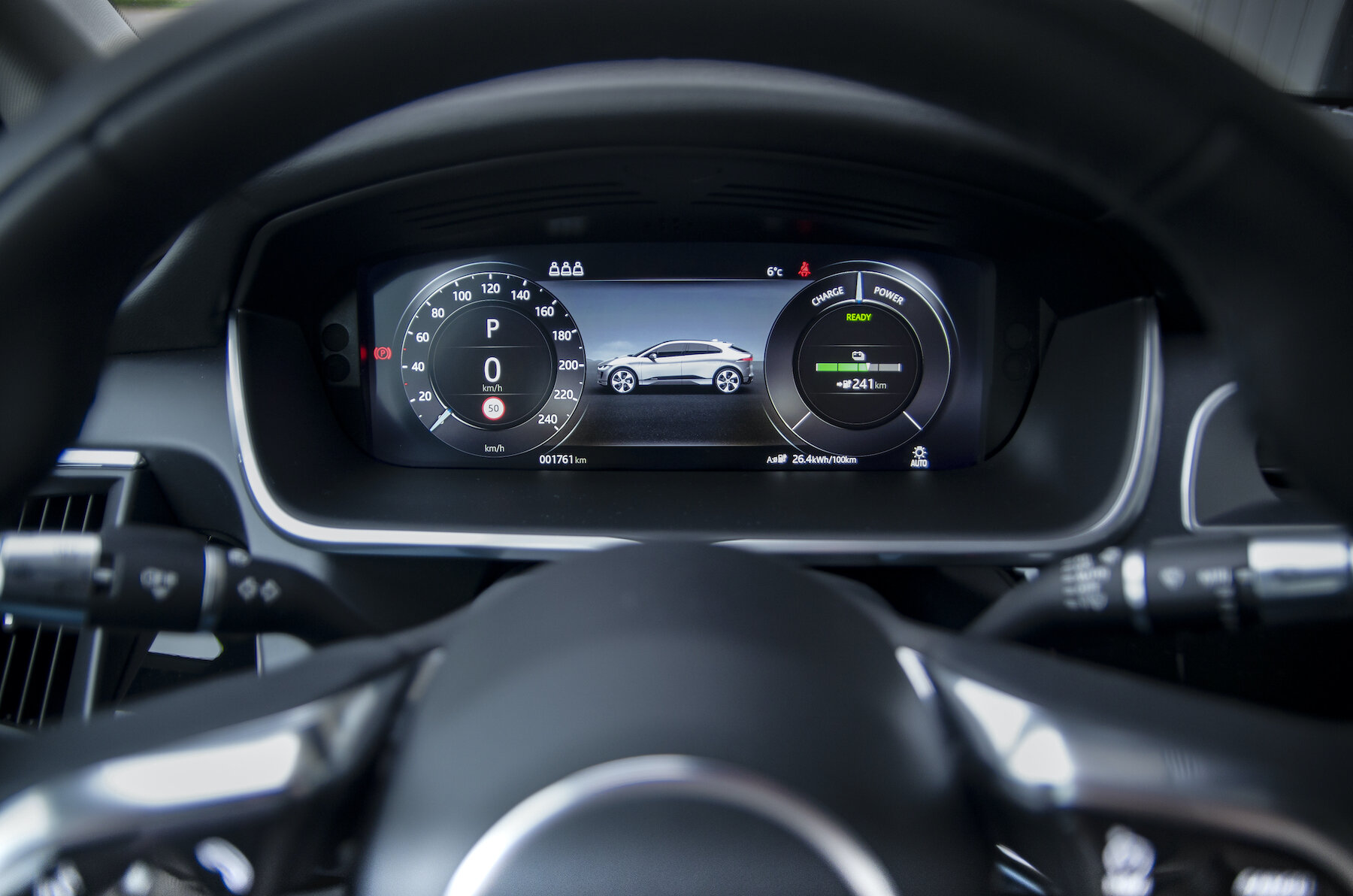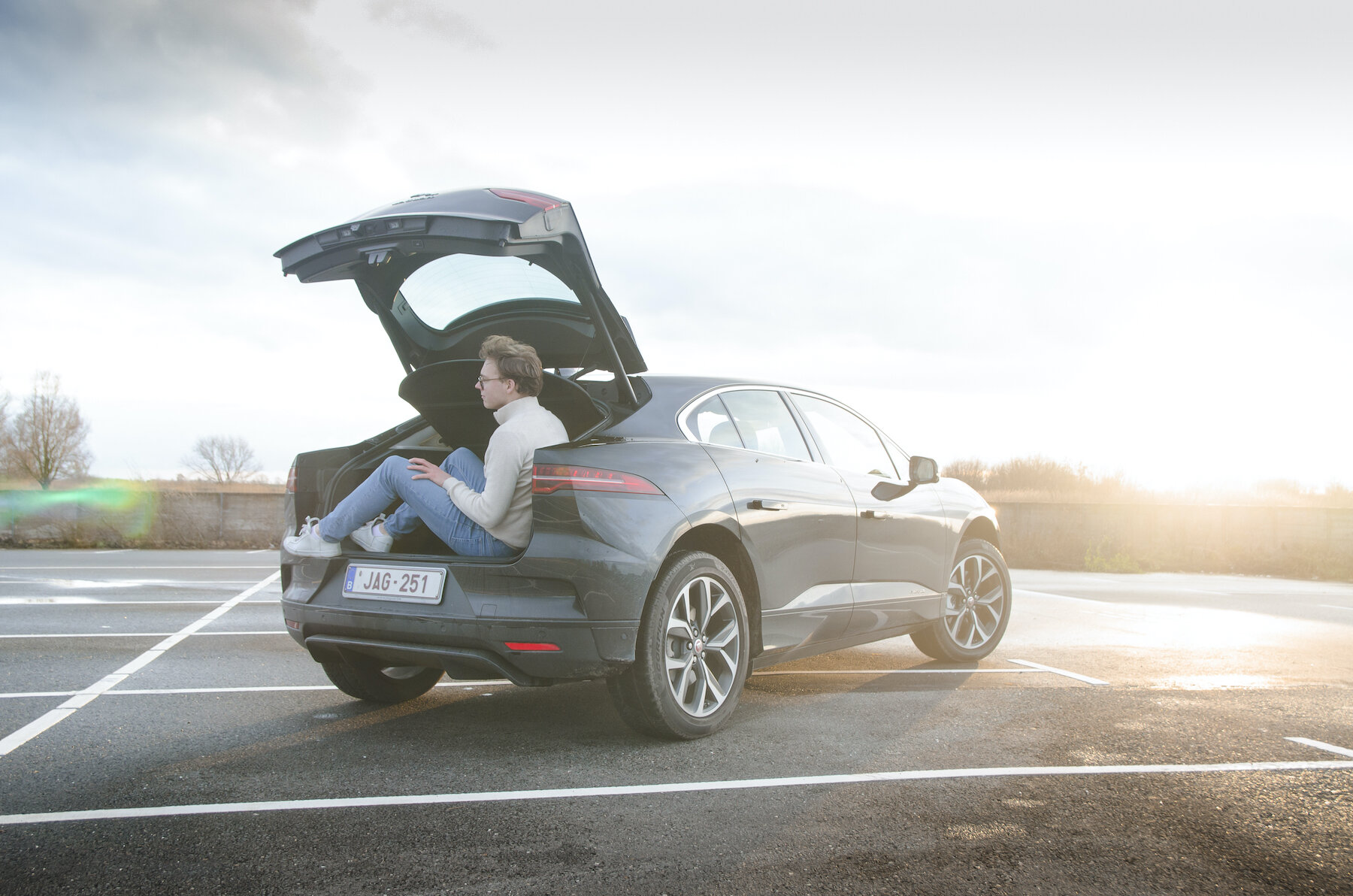I-PACE EV320: Fair trade-off?
The Jaguar I-PACE, where are we two-and-a-half years after its debut? The automotive scene changes quickly, and the ever-growing amount of EVs effectuates a demand in EV charging points. The infrastructure is not the same as it was when Beau drove the I-PACE EV400, which makes this car a lot more usable than ever. To prove it, we test drove the new I-PACE S EV320.
What I meant to say is, two-and-a-half years is a long time in the EV-world. The Jaguar I-PACE was a hit in the Netherlands in 2018 (the best-selling car in December). However, without financial support from the government, the I-PACE quickly became a little expensive compared to competitors. To keep up, Jaguar updated the I-PACE. The update includes the new Pivi Pro-infotainment system, minor exterior tweaks and – most importantly – the ability of 3-phase AC charging at home, enhancing the speed to 11 kW, just like far less expensive EVs already did. A charging speed of 11 kW theoretically translates into 53 kilometres of range per hour. DC charging is increased to 100 kW.
Re-energized sales
The EV400 designation always left the suggestion that Jaguar would add an I-PACE to the line-up, an SVR-inspired EV500 for example. The EV320 came, and that seems a logical move. The EV320 trades 80 horsepower for a 15.000-euro reduction in price. A fair deal and it will most certainly re-energize the sales. The best thing of all is that the EV320 shares the battery pack with the EV400, so no reduction here.
Racing heritage
Jaguar proudly displayed the new features of the I-Pace in the form of a webinar. We learnt that the developments concerning the I-PACE seep through from Formula E innovations. Jaguar’s I-PACE engineer Steve Boulter told us that the main focus lies on drive train efficiency. The theoretical range of 470 kilometres supports this focus point, considering this car has a large frontal area and weighs 2133 kilograms. However, the actual 404 km range, that I managed during the test, slowly creeped towards the less efficient side of the spectrum, since the battery capacity is a vast 90 kWh. During the test, I averaged the I-PACE at 22,3 kWh/100km.
When you take place in the driver’s seat, you will notice the fact that this car is built by people that care about the way it drives. Although quick steering input can upset the car, it behaves very neutral in corners. The batteries provide a low centre of gravity, so it does not lean as much as you expect from the comfortable suspension. This results in a car that handles surprisingly well, given the fact it weighs more than 2 tons. It also has a very quick steering rack, only 2.6 turns lock-to-lock, which definitely adds to the vivid experience. Jaguar made sure that the I-PACE still carried a bit of SVR-genes over, which are expressed when you select the ‘Dynamic’ driving mode. The cluster turns red and the interior speakers simulate a bizarre SVR-like supercharger whine when you floor it.
Since the EV320 has 80 horsepower less, it accelerates quite a bit less quickly than the EV400, however it still manages 0 to 62 in 6.4 seconds. Off the line it doesn’t feel that quick, but the way it picks up speed from a rolling start is out of one’s mind.
Living with the I-PACE
The few people that saw the I-PACE during the test were almost let down by the lack of luxury that the S-trim level offers. Perhaps people just expected a lot from this futuristic looking Jaguar in terms of luxury. Overall, the equipment was fine. Some of the obvious luxury that is considered as standard on a car of this calibre was absent on this test car. I’m talking about electric seats and wireless phone charging here. Keep in mind this was the basic trim-level.
The interior is good, and the climate control buttons definitely look the part. Over all, the fit and finish is good, and the center console is beautifully sculptured. The one thing that bothers me was the view out of the car. Given the position of the windscreen relative to the driver, the dashboard is of immense size. This disadvantages the visibility close in front of the car. The same issue presented itself in the back, where the waistline of the design forces the side windows to be slightly high-up, providing the back-seat passengers with a claustrophobic feeling. What’s more, the rear window is nothing more than a letterbox, effectively.
Nowadays, charging it up is no more of an issue. The I-PACE smartphone app directs you to the closest charging point where you can opt for 100 kW charging. Nontheless, the charger maxed out at 62 kW. I have to mention that the weather changed for the worse during the time I had the I-PACE on test, with temperatures below 5 degrees. This affected the charging and the range. The range calculator on Jaguar’s website warned me for this, temperatures close to zero degrees Celsius and the use of the heater bring the range down to a mere 280 kilometres.
Concluding
Again, you’re reading an I-PACE review and it ends with a slightly negative remark on the electric range. Looking back at the time I had with the I-PACE, I’d like to give this review a positive twist. This EV320 seems like the perfect trade-off between power and costs, and if it was my own money, I’d go for the EV320. It’s very similar to the EV400, for a lot less money. And the trunk challenge? Measuring 656 litres, of course it passes the trunk challenge.














